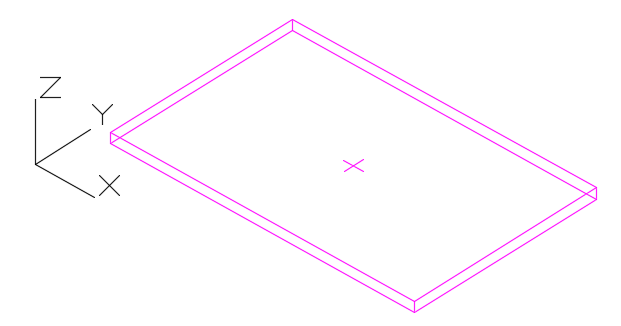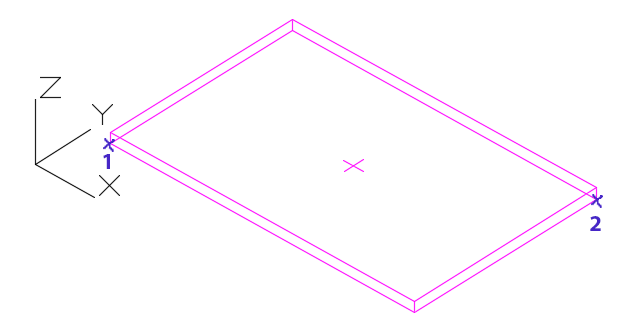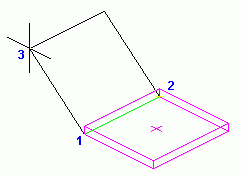Learn the different ways to create a rectangular plate.
Create rectangular plates using a center point
The rectangular plates of a default size are placed in the X/Y plane of the current coordinate system. The plate thickness direction is in the positive Z direction. You can control the Advance default plate thickness, using the Management Tools application.

Access the command
On the Objects tab  Plates panel, click
Plates panel, click
 (Rectangular plate, center).
(Rectangular plate, center).
Command line: _AstM4CreateRect1DigPlate
- Place a coordinate system with the X/Y plane in the required plate plane.
- On the Objects tab
 Plates panel, click
Plates panel, click
 (Rectangular plate, center).
(Rectangular plate, center).
- Select a center point with an object snap or by entering coordinates.
- The plate is created with a default length, width, and thickness.
Create rectangular plates using two diagonal points
The rectangular plates are placed in the X/Y plane of the current coordinate system. The plate thickness direction is in the positive Z direction. You can control the Advance default plate thickness, using the Management Tools application.

Access the command
On the Objects tab  Plates panel, click
Plates panel, click
 (Rectangular plate, 2 points).
(Rectangular plate, 2 points).
Command line: _AstM4CreateRect2DigPlate
- Place a coordinate system with the X/Y plane in the required plate plane.
- On the Objects tab
 Plates panel, click
Plates panel, click
 (Rectangular plate, 2 points).
(Rectangular plate, 2 points).
- Specify the first corner point.
- Specify the diagonal opposite corner.
- The plate is created.
Create rectangular plates using three points
Without a UCS in the right plane, you can create a rectangular plate by selecting three points. The three points define the creation plane.

Access the command
On the Objects tab  Plates panel, click
Plates panel, click
 (Rectangular plate, 3 points).
(Rectangular plate, 3 points).
Command line: _AstM4CreateRect3DigPlate
- On the Objects tab
 Plates panel, click
Plates panel, click
 (Rectangular plate, 3 points).
(Rectangular plate, 3 points).
- Specify the first corner point.
- Specify the second corner point. This point defines the plate length.
- Specify the third corner point. This point defines the plate width and orientation.
- The plate is created.
